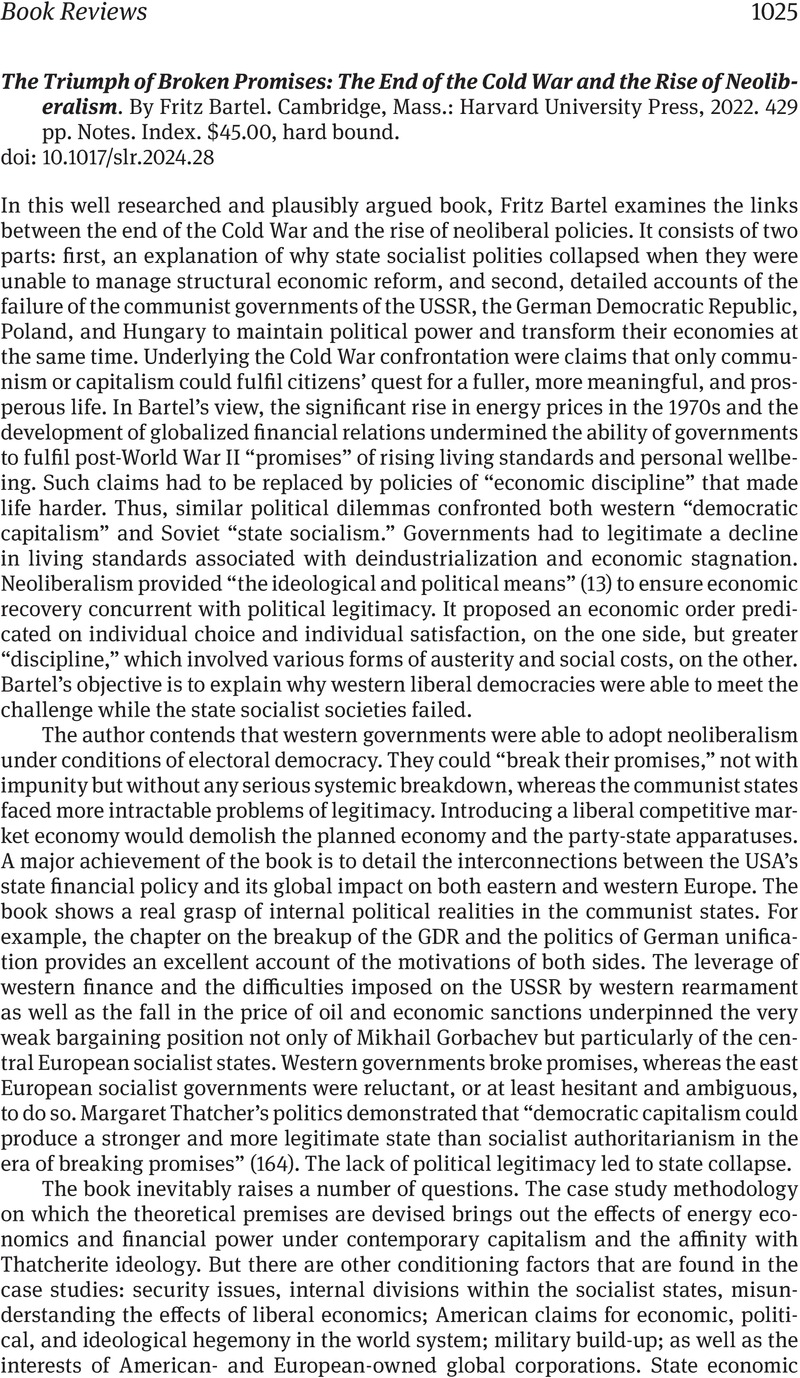No CrossRef data available.
Article contents
The Triumph of Broken Promises: The End of the Cold War and the Rise of Neoliberalism. By Fritz Bartel. Cambridge, Mass.: Harvard University Press, 2022. 429 pp. Notes. Index. $45.00, hard bound.
Review products
The Triumph of Broken Promises: The End of the Cold War and the Rise of Neoliberalism. By Fritz Bartel. Cambridge, Mass.: Harvard University Press, 2022. 429 pp. Notes. Index. $45.00, hard bound.
Published online by Cambridge University Press: 18 April 2024
Abstract
An abstract is not available for this content so a preview has been provided. Please use the Get access link above for information on how to access this content.

- Type
- Book Review
- Information
- Copyright
- Copyright © The Author(s), 2024. Published by Cambridge University Press on behalf of Association for Slavic, East European, and Eurasian Studies


